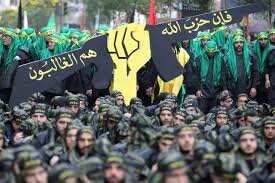Hezbollah able to turn challenges into opportunities

BEIRUT - Throughout the past decades of conflict with the Israeli occupation regime, Syria has been a strategic ally for all Palestinian and Lebanese resistance movements in West Asia.
Obviously, the unfolding events in Syria, which started on December 8, will impose undeniable challenges; however, Hezbollah has long proven its ability to transform challenges into opportunities in parallel with developing its local production and expanding regional alliances.
Hezbollah possesses a large military stockpile that enabled it to resist a fierce war for 66 consecutive days. During the recent “Uli al-Bas” battle, the Israeli enemy claimed that it had eliminated thousands of Hezbollah’s missile launchers and weakened its military capabilities. Nevertheless, Hezbollah carried out dozens of missile and attack operations with suicide drones, in addition to thwarting the Israeli military ground invasion.
Accordingly, in the short term, Hezbollah has sufficient equipment to confront any US-led Israeli aggression, especially as it has thrived on resistance which takes into account the difficulty of providing logistical support.
In the long term, Hezbollah will seemingly give priority to manufacturing weapons and equipment inside Lebanon. Further, it may use the Yemeni supply model via the Red Sea or the one followed by the Palestinian resistance in Gaza and the West Bank, which has significantly succeeded despite the blockade.
During a speech on February 16, 2022, Martyr Sayyed Hassan Nasrallah (RA), Hezbollah’s Secretary-General, revealed that the resistance had long ago begun manufacturing drones and precision-guided missiles inside Lebanon. He added: “The [Israeli] enemy knows that the resistance is receiving qualitative weapons from Iran, so it is trying to stop this through bombing in Syria.” Hezbollah was founded in the early 1980s amid the 15-year Lebanese civil war. It gained momentum by opposing imperialist influence in West Asia until it forced the Israeli army to withdraw from southern Lebanon in May 2000, and posed an existential threat to it during the July 2006 and September 2024 wars.
On 30 September 2024, following the martyrdom of Sayyed Nasrallah, Sheikh Naim Qassem asserted that Hezbollah “We know that the battle will be long, we are prepared to face any possibility, and we will emerge victorious from this battle.”
Hezbollah has, in advance, drawn up plans for scenarios, which may hinder its traditional supply route; thus its engineers have, over the past years, developed short, medium, and ballistic missiles, launchers, rocket launchers, suicide drones, and various military technologies.
In addition, Hezbollah can assemble, reproduce, and develop military components, including all types of shells and missiles, explosive devices, and other types of warships and sea mines. This reduces the cost and the resistance can guarantee the outcome. In parallel, Hezbollah has paid close attention to intensifying the training of its combat, technical, and planning cadres in engineering, electronics, and artificial intelligence.
In an article published on November 3, 2024, The Times revealed that Britons were fighting alongside the Israeli army in the war against Hezbollah. A British paratrooper reserve soldier recorded his diary during the 8 days he spent in Lebanon, noting that most of the Hezbollah fighters he encountered had undergone training in Iran and gained combat experience in Syria.
The British soldier describes them as “the best of the best, the cream of the crop”. He was part of two brigades that attempted to invade Lebanese towns near the border on October 20. Each brigade includes up to 2,000 soldiers. He recounted that while he was preparing to enter a building, they discovered that it was rigged with explosives.
